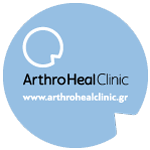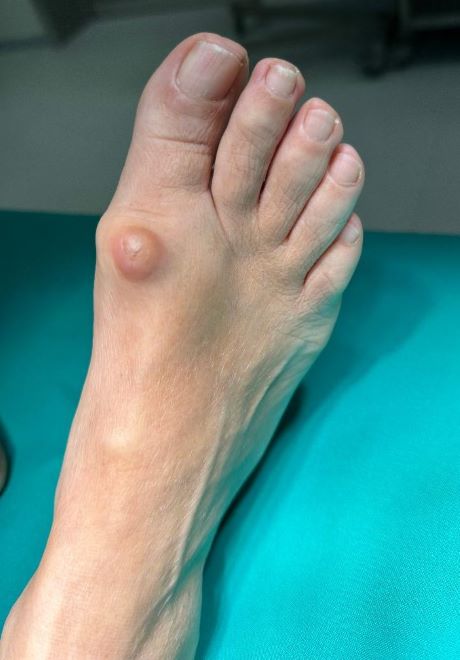
The stiff big toe (HALLUX RIGIDUS) is a painful progressive pathological condition of the foot that concerns the 1st metatarsophalangeal joint. It appears in people over 50 years of age. Essentially, it is the development of arthritis, wear and tear of the articular cartilage of the joint consisting of the head of the 1st metatarsal and the proximal phalanx of the big toe. It can be combined with bunions (hallux valgus), but it can also occur without this deformity.

CAUSE
- Previous joint injury and gradual onset of post-traumatic arthritis.
- Pre-existing foot conditions such as flat feet or clubfoot as well as bunions can lead to the development of a stiff big toe
- Genetic factors
SYMPTOMS
- Pain in the big toe which makes it difficult for the patient to walk and progressively also to rest.
- Stiffness of the 1st metatarsophalangeal joint which leads to a change in the walking model resulting in burdening the more central joints such as the knee, hip and lumbar spine.
- Edema (swelling) and inflammation of the joint as a result of which the patient cannot wear his shoes and is limited to the use of special shoes (soft and roomy)
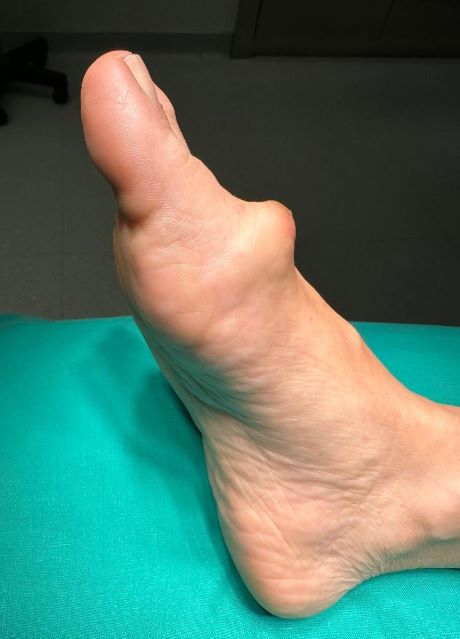
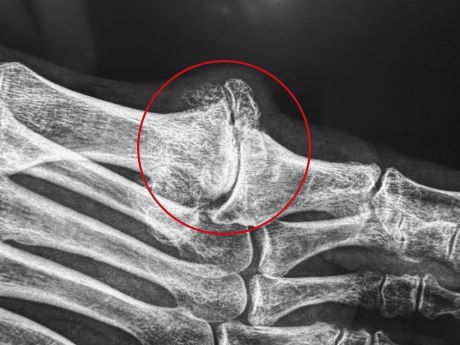
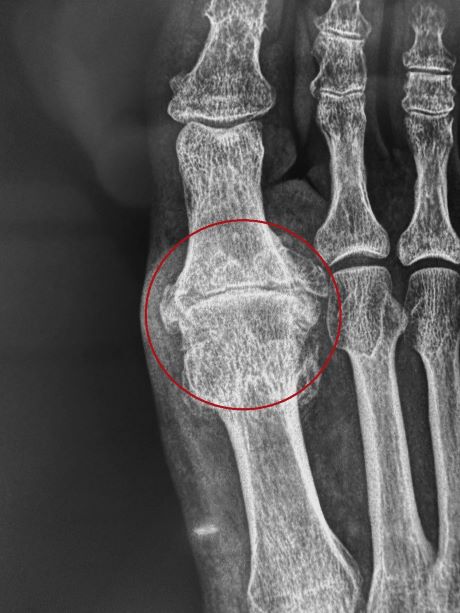
Hallux rigidus. X-ray: 1st metatarsophalangeal arthritis (red circle)

